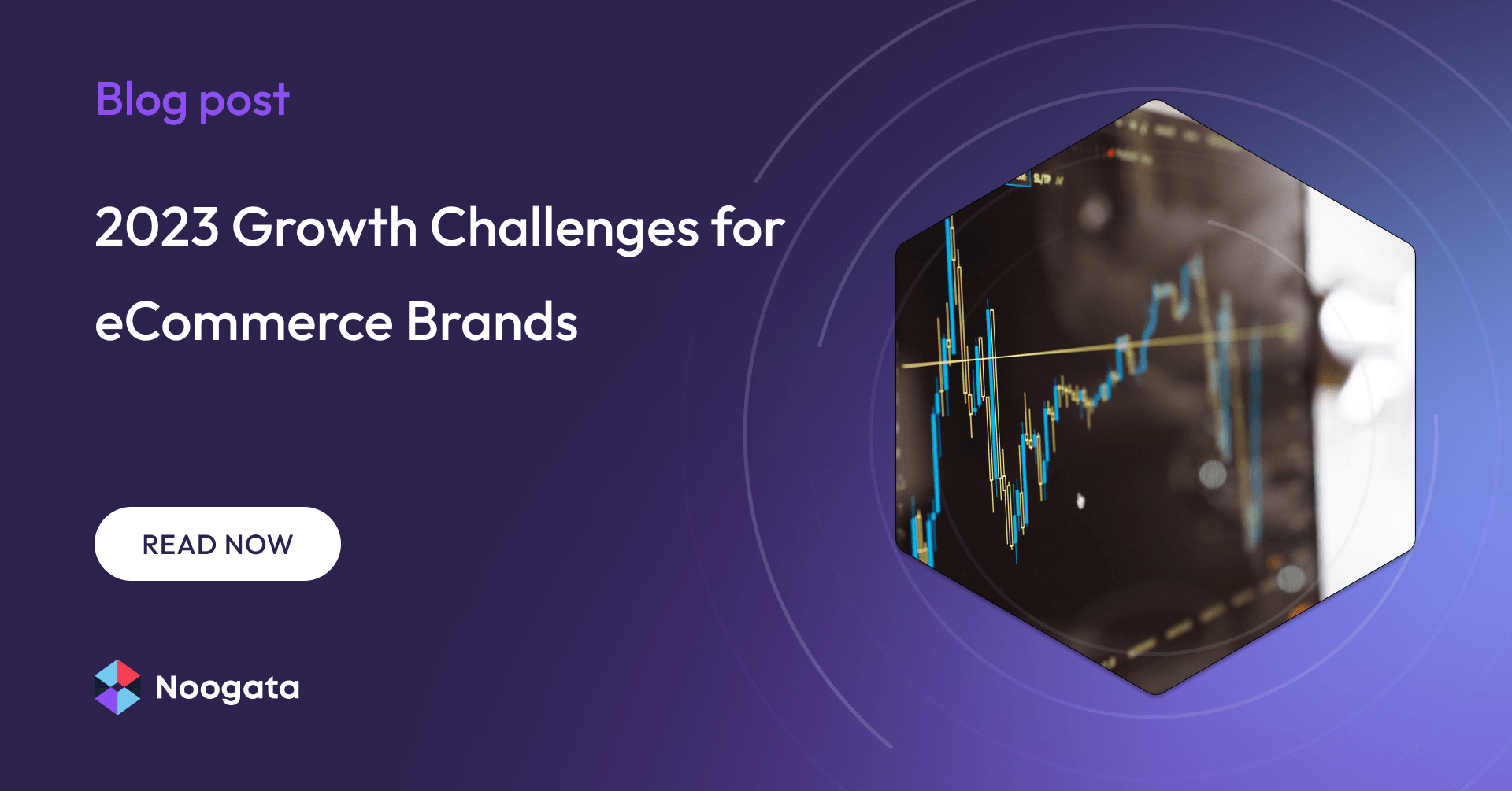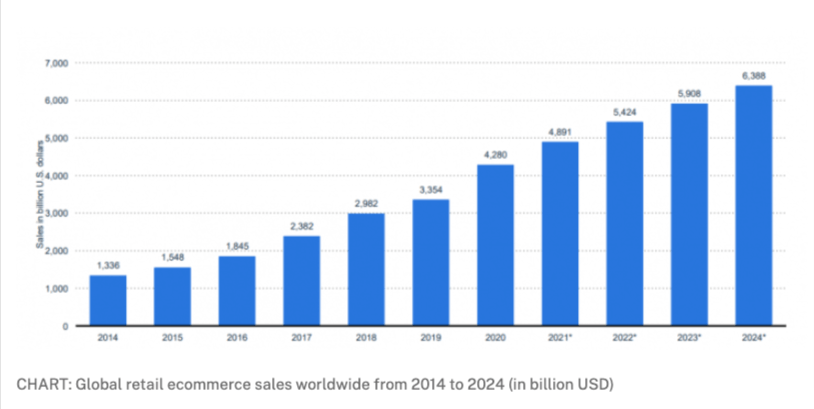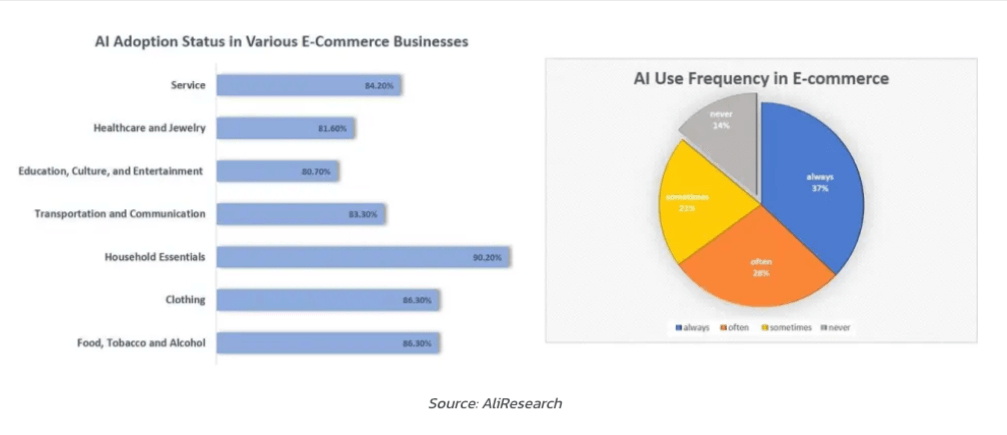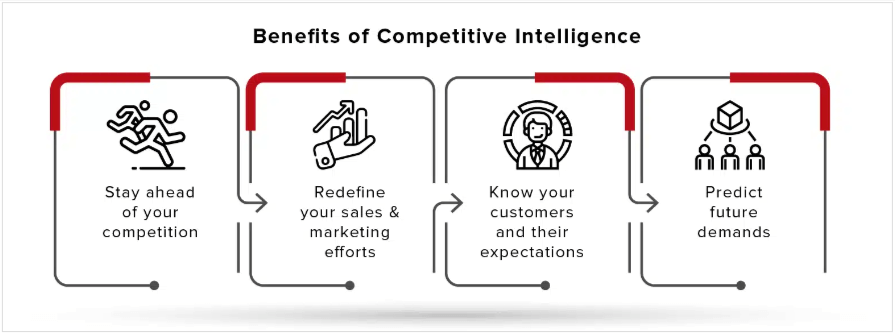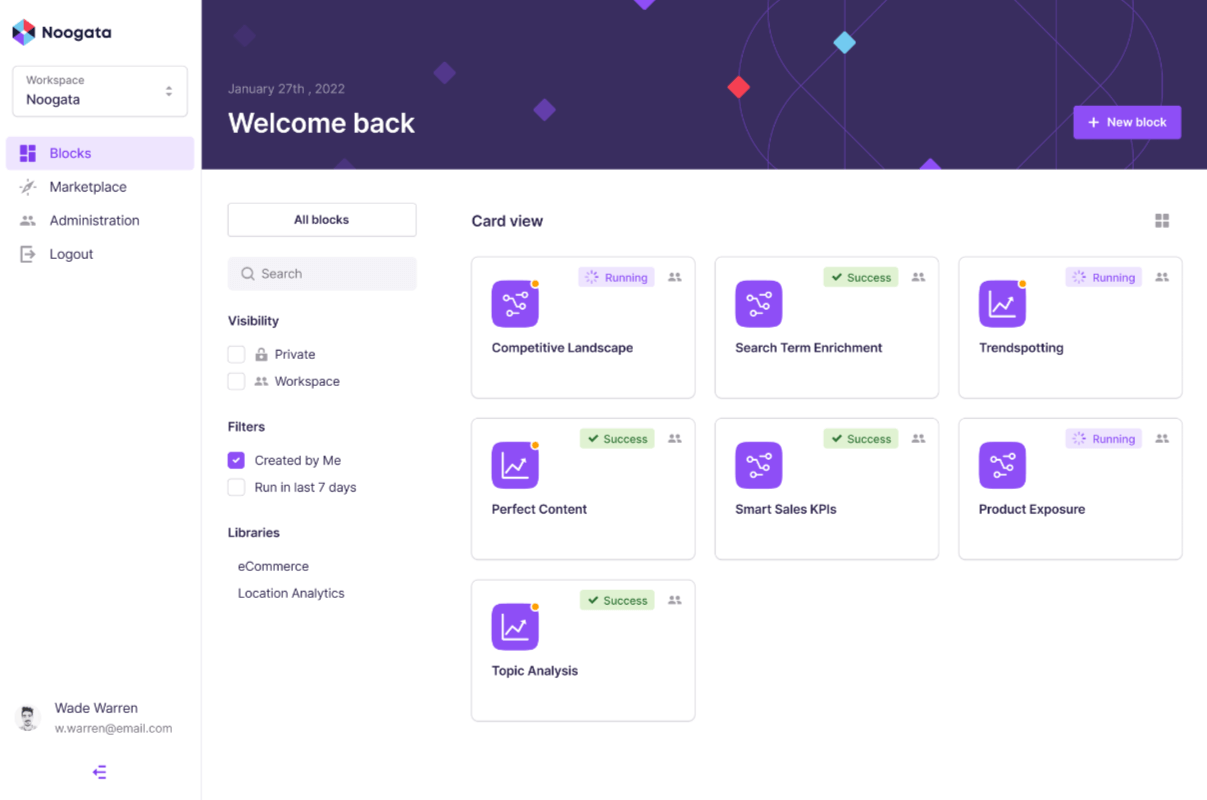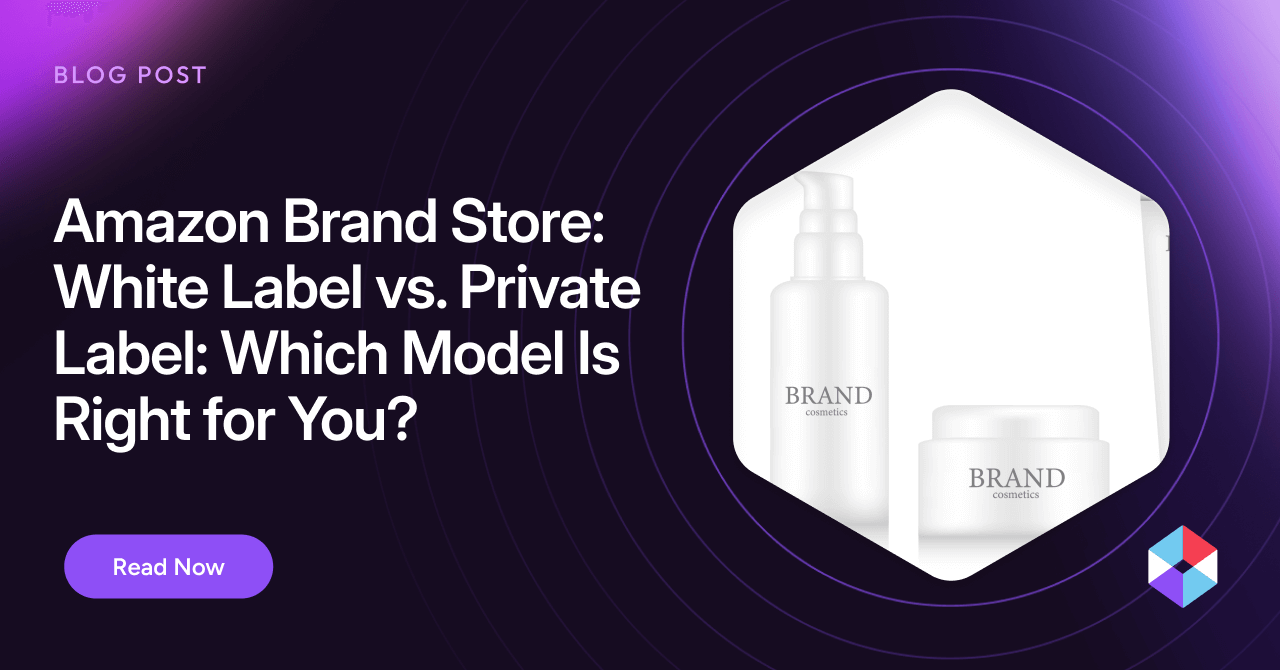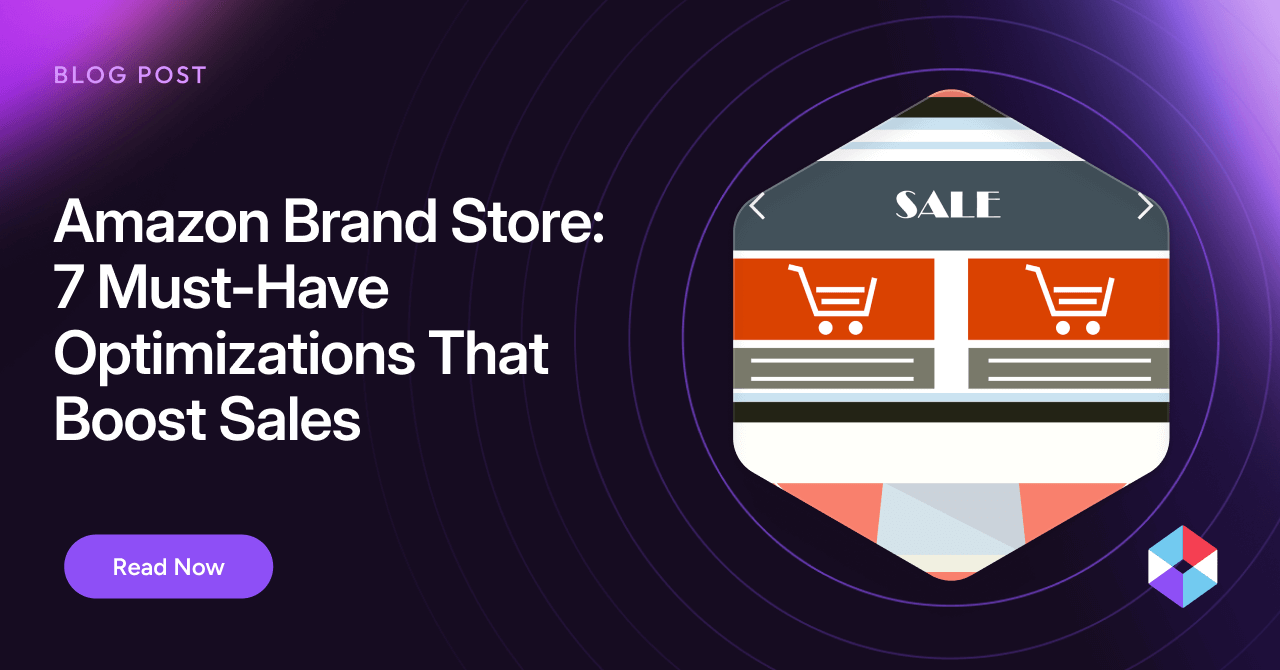More customers than ever are shopping online, although that doesn’t mean it’s smooth sailing for the eCommerce brands serving them. Recent news that giants like Amazon are struggling with weak growth has sent ripples of concern through the industry, amplified by changing consumer behavior.
This year, eCommerce will account for 20.8% of global retail sales, so there is clear proof that the future is bright and plentiful—but it might be a bumpy ride with more than a few growth challenges for brands along the way.
The 2023 Landscape of Triumph and Turbulence
While the pandemic was an immense challenge for many industries, it created the perfect environment for eCommerce to shine. Shopping was no exception as the world shifted to digital experiences and interactions. McKinsey reported that eCommerce had grown five times faster in some countries than before the pandemic.
Now that the clouds have cleared, new macro challenges emerge, as it is impossible to avoid the ongoing effects of inflation and interest rate hikes. Many eCommerce companies rely on tech partners (or have proprietary platforms and software), meaning they’ve been swept up in the ongoing tech industry turbulence, which includes a decrease in venture capital funding, job layoffs, and the much-reported collapse of Silicon Valley Bank.
So, is it all doom, gloom, and disappointing headlines? Or is there a silver lining to all this bad news?
Growth is on the Horizon
Despite the tumultuous economic landscape, the eCommerce market will continue to grow by 56% by 2026, at which point it will be worth $5.8 trillion annually. According to Jessica Christenson, Regional VP of Mirakl, the reasoning behind this continued growth is pretty simple: “Customers will look for opportunities to maintain shopping even while retaining a more conservative budget.”
The State of eCommerce Discovery 2023 report found that customers are still keen to buy—they’re just more cautious about their discretionary spending. The company behind the report, Syte, noted that eCommerce businesses are working hard on “closing the gap between consumer engagement and spending, ensuring that shoppers are easily finding what they’re looking for and being redirected to the right products as needed.”
In response to the budget-conscious attitude to shopping, winning eCommerce businesses are leveraging data and AI to offer tailored products to consumers exactly when they are ready to purchase. By partnering with a competitive intelligence platform like Noogata, successful businesses optimize their digital shelf with the right products consumers seek.
In uncertain economic times, converting customers isn’t about enticing them to buy items they don’t need—it’s about enabling them to purchase items they do need.
Speed Is of the Essence with Digital Experiences
Customer expectations are getting worse—or should we say, “better”? 76% of customers will stop doing business with a brand after only one bad customer experience. Who can blame them when plenty of other fish are in the eCommerce sea?
The solution is using a competitive analytics platform that helps you understand consumer behavior, expectations, and spending patterns on a deeper level, ultimately boosting business performance and efficiency.
When it comes to efficiency, customer service is a great place to start optimizing your processes (with a little help from AI). For example, chatbots can handle inquiries and provide immediate responses, helping reduce customer service costs by as much as 30%. “Immediate” is the keyword here, because 82% of consumers say getting instant brand responses is essential. The rewards for exceptional service are worth the investment. 86% of loyal customers will stick to their favorite brand, often spending more in the long run.
Use Competitive Intelligence to Maintain Consistency Across Channels
There is another strategy to perfecting customer loyalty and retention, as Stuart McMillian writes for Econsultancy: “Smart businesses encourage cross-channel behavior, as there is a lot of data which shows that the more channels a customer interacts on, the more loyal they are.”
When buyers are reluctant to part with their cash, nurturing them through the sales funnel is crucial no matter how they interact with your business.
Brands that are present on multiple channels attract a wider audience and mimic the multi-faceted experience of bricks and mortar shopping. Theoretically, your customers will be one of many, yet they expect to feel like one of few. Website segmentation and product recommendations are must-haves, as 90% of consumers say customized eCommerce experiences influence them.
In a recent Forbes article, eBay’s Head of AI noted that the success of omnichannel offerings lies in connecting buyers and sellers via intent—which tools like Noogata do exceptionally well. Noogata’s Search Trendspotting solution enables your brand to capitalize on search trends and consumer intentions ahead of the competition. Its generative AI technology explores how products rank in the entire competitive space, then identifies new or upcoming industry search trends to create direct and relevant interactions with interested buyers.
Can You Overcome These Four Critical Growth Challenges?
The eCommerce winners in 2023 will be the businesses that can make decisions and take action based on reliable competitive intelligence data. Here are four challenges that will dominate the industry this year, plus our recommendations for overcoming them.
1. Ad Costs
Advertising is undergoing a period of significant change. Costs are rising, meaning that every cent invested needs to make an impact. During the pandemic, traditional brands shifted to digital advertising to meet customer expectations, further cluttering the already-busy market.
The solution isn’t to stop running ads (paid ads increase the likelihood of purchase by 50% compared to organic traffic, so why would you?). Instead, smart eCommerce brands use predictive analytics to gain visibility into customer searches and deliver clear ROI.
By prioritizing technology like Noogata’s Ad Booster solution, brands can identify exactly which products to advertise and view the most valuable keywords driving traffic. Anticipating what customers want is one of the golden rules of advertising, but harnessing real-time data collection to view results is a much safer bet when your budget is on the line. Noogata helps brands discover the concrete proof behind every organic and paid ad and expand their reach.
2. Competitor Analysis
Nowadays, anyone with an internet connection can enter the world of eCommerce through Amazon’s marketplace. With its user-friendly interface, opening an Amazon storefront is a breeze, and the platform currently boasts over 1.5 million active sellers worldwide. More than 350 million products are listed on Amazon, with an estimated 70% of those products coming from third-party sellers. To come out on top, you need to understand who you are up against.
Putting competitive intelligence first means making decisions based on data. It would be impossible for your sales and marketing teams to keep track of every product’s performance, which is why eCommerce businesses turn to CI tools like Noogata to automatically monitor and collect competitive data in real time.
Powerful AI models generate actionable recommendations and insights based on the posture of your digital shelf, advertising, and content, among other metrics. With this data, brands have everything needed to create a deeper understanding of their customers and competitors, optimize products, and unlock growth.
3. Dynamic Pricing
When asked why they buy online, customers’ top two answers were about cost savings: free delivery (53%) and coupons or discounts (41%). In light of ongoing economic factors, it’s unlikely that eCommerce brands are interested in taking a “race to the bottom” pricing approach.
But by utilizing AI, they also won’t need to. Generative AI tracks how competitors price similar items and then offers insights and recommendations about repricing, discounts, and profit margins. These insights can even be harnessed in unison with personalization. For example, the AI can suggest products to a customer based on their recent purchases and intent data. Then, it could automatically rank the products based on their profit margin.
More than one-third of customers look at prices online when they’re in a brick-and-mortar store, so shopping in person doesn’t always mean the customer will make a purchase there and then. With competitive intelligence suggestions, product pricing will always align favorably with other brands to ensure your brand is visible online.
4. Real-Time Optimization
Nitzan Mekel-Bobov, Head of AI at eBay, said that the secret to personalization is “technology plus a plethora of data.”
Customers are 110% more likely to add items to their basket if they are greeted with customized content because they will feel engaged by your brand. Plus, they can access the products they want more quickly, which is a crucial strategy for 2023 as consumers tighten their spending habits.
AI technology enables businesses to create a customized online experience for every visitor, deliver relevant intent-based marketing, and surface product offerings. Brands can take customization to a granular level with solutions like Noogata’s Perfect Content. It rapidly generates titles and descriptions for products at scale based on trending keywords and smart predictions. Perfect Content optimizes thousands of products on your digital shelf easily, automatically benchmarking your content with brands in the same competitive landscape.
As far as eCommerce consumers are concerned in 2023, irrelevant digital content is definitely out, and personalized, easily discoverable items are in.
Data-Backed Decision-Making Provides Real Results
Despite the quest for better ads, pricing, experiences, and everything in between, every eCommerce brand shares the common goal of converting and retaining customers. This will remain the foundation of success, but doing it this year will be more demanding than ever.
Looking at 2023’s growth challenges as a whole, it’s clear that the solution separating winning eCommerce brands from the rest will be using AI-powered tools to make data-driven decisions that support growth and boost their competitive performance.
The best part is that eCommerce brands can get started today.
